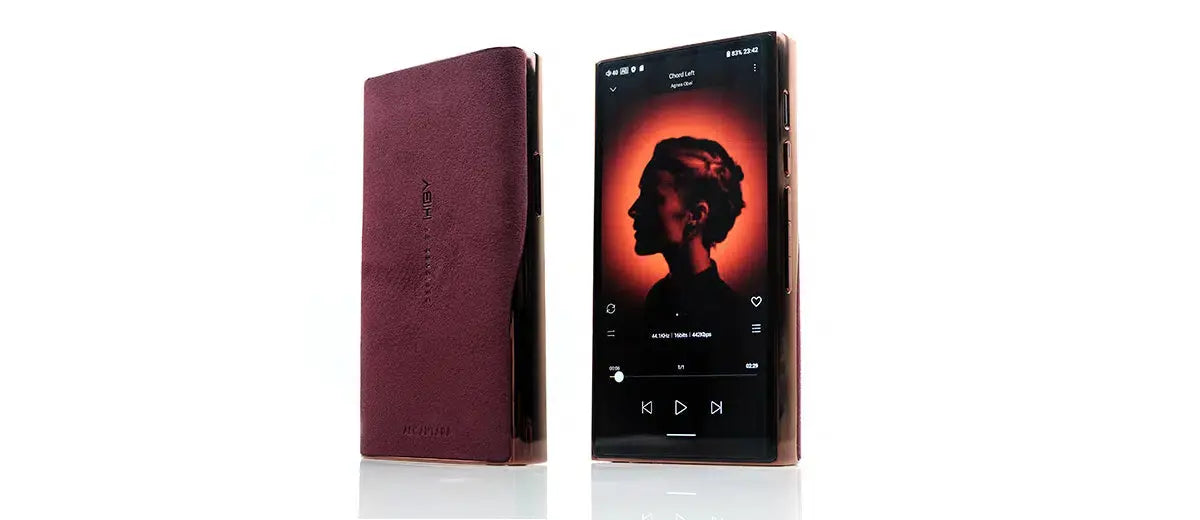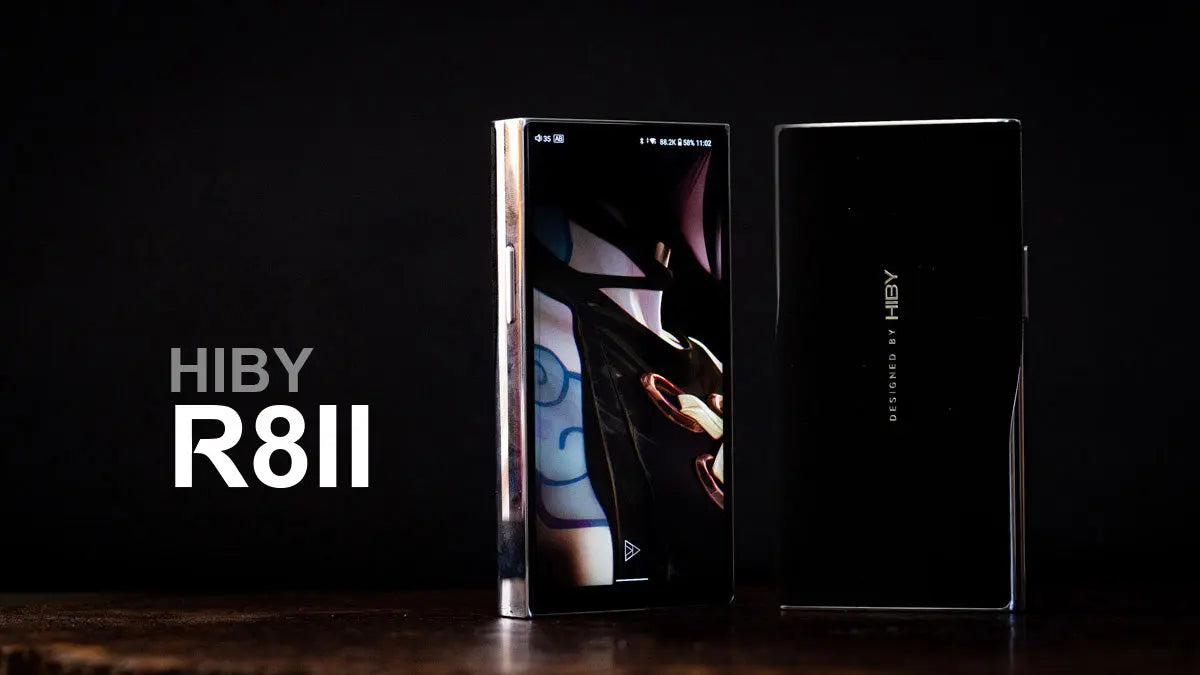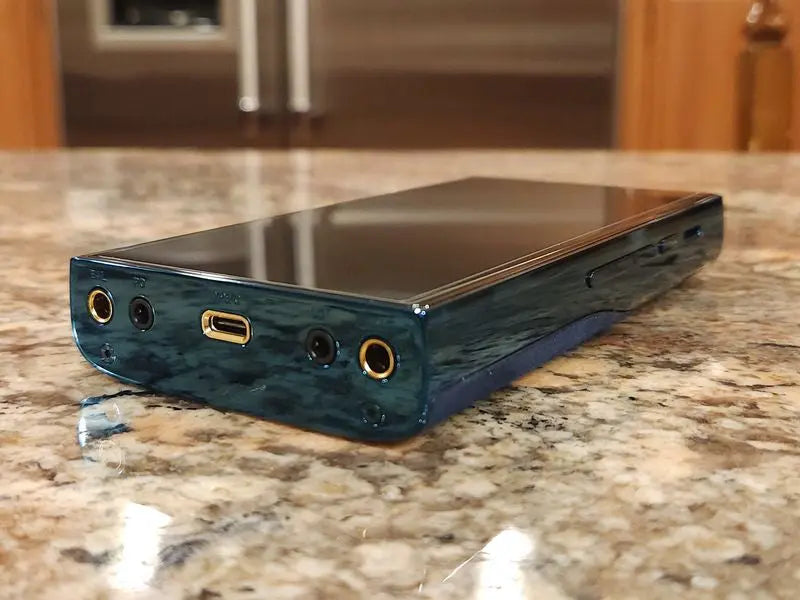We review the HiBy R8 II, which is a new Android 12-equipped digital audio player with a unique in-house-designed discrete DARWIN-MPA DAC. It is priced at $1999 SRP.
Disclaimer: This sample was sent to us in exchange for our honest opinion. Headfonics is an independent website with no affiliate links. We thank HiBy for their support.
You can click here to read more about the HiBy products that we have previously featured on our website.
Note, that this article follows our latest scoring guidelines which you can read in more detail here.
Eight has always been HiBy’s number of choice for their flagship digital audio players from the original R8 in 2020, to the Top Gear Award-winning RS8 in 2022, and now their latest offering, the R8 II.
The RS8 still stands as their flagship DAP for now so the new R8 II, priced at $1999, sits just behind it and replaces the original R8 which is now being phased out.
At this price point, it also has some stiff competition from the likes of the Cayin N7, and FiiO’s monster M17 DAP, not to mention the lure of the RS8 itself.
However, despite not being the flagship offering, the R8 II may well be HiBy’s most technologically advanced player to date. It also brings an outrageously good-looking design to the table much like the R6 Pro II. It’s a looker, but importantly, it’s also a performer.

WHAT IS THE HIBY R8 II?
The HiBy R8 II is an open Android 12 high-end digital audio player with 8GB of RAM and 256 GB of onboard storage and powered by a Snapdragon 665 CPU.
It is designed primarily to be used with IEMs and a wide range of headphones but can also link up as a transport or source to dedicated DACs and amplifiers.
The R8 II uses a balanced design architecture for amplification in combination with its in-house DARWIN-MPA technology for digital signal management and decoding reaching up to DSD1024 and PCM 32BIT/1536k and also including provision for 16X MQA native unfolding.
WHAT DOES IT DO?
The R8 II serves several user requirements. It can be a portable player via HiByMusic with a large 12000mAh battery inside to keep you going for around 11-21 hours depending on your usage.
With BT5.0 support, you can also operate it wirelessly to transmit audio up to LDAC quality to wireless earphones or headphones.
If you fancy a bit of streaming you have the whole Google Play app ecosystem via WiFi 2.G/5G for DLNA, AirPlay, or use it as a Roon endpoint via Roon Arc. Needless to say, the R8 II can be loaded with your favorite streaming apps including TIDAL, Qobuz, and Spotify.
You can also stay at home or in an office and plug the R8 II into your PC/MAC to act as a standalone integrated USB3.2 compatible USB-DAC and amplifier or feed a line-out signal to an analog headphone amplifier of your choice.

WHAT IS DARWIN-MPA?
The R8 II sees the much-vaunted DARWIN architecture take another leap forward and establish HiBy as an emerging chipset designer in their own right.
This is their first audio player to feature their in-house custom-designed 16-way current mode delta-sigma-based decoder and as such, is a significant break from using off-the-shelf chipsets.
This new decoding process matches the RS8 by offering a class-leading native DSD1024 and will handle PCM to an equally high 32BIT/1536k. The R8 II also retains the 16X MQA and DTA bitperfect architecture decoding capability of the original R8.
However, this is only one part of their new generation DARWIN-MPA architecture, (Multiphase PWM array). The previous DARWIN II R-2R framework provided HiBy with an essential foundation and perhaps a learning basis to allow them to move to a more expansive design.
At the high level, Darwin-MPA is an end-to-end Hi-Res audio processing design that incorporates everything that happens before, leading up to, and including the delta-sigma-based decoding.
That includes innovative features such as its DSD bypass, even higher oversampling than before at 128FS compared to the previous 16FS, as well as linear phase control through an enhanced 1024-tap cascaded FIR filter system.
Think of it as an approach not too dissimilar to Chord Electronics’ in-house FPGA-based DAC and dCS’s discrete-designed Ring DAC.
DUAL AMPLIFICATION
The R8 II retains the distinctive dual operational mode for both its balanced and single-ended amplification output.
That means you can switch from either a Class A mode or a Class AB mode during playback via the OS with a simple finger press to get two distinctive amplification performances. There is no variation in rated power for either mode, both will output the same Vrms/mW levels.
Both options are compatible with HiBy’s Turbo Mode feature which is something I tend to turn on and forget about unless I want to lengthen the battery life per charge as it can be a bit intensive.
For those new to Turbo mode increases the default voltage supply by 25% enhancing the dynamics with both IEM and headphones. In this instance, the default ±6V is raised by 1.5V to ±7/5V.



